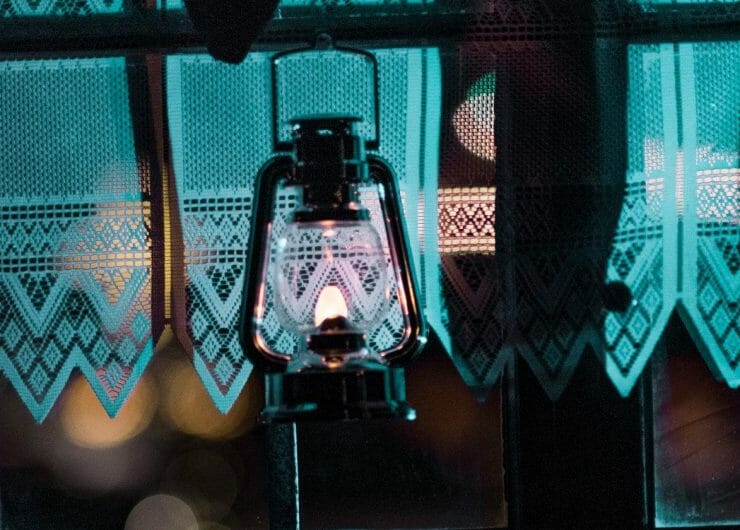
Here are some true and untrue stories about “Silent Night”.
The organ was defective and the mouse was to blame
Truthfulness: 0 %
There are particularly many legends and stories about the first time that the song was performed. The question is often raised why Franz Xaver Gruber’s melody for the song includes two solo voices and a guitar accompaniment. After all, guitars were mainly used at inns and taverns at the time and had no business inside a church building. A well-known and popular explanation for the guitar is the story of the mouse, which is still told to this day. Supposedly, a little mouse had been so hungry that it started nibbling at the old bellows of the church organ. As a result, the instrument was damaged so badly that it could not produce a single sound on Christmas Eve and the melody of “Silent Night” had to be performed with the guitar. The story about the defective organ has been going around since 1909, when Josef Gottlieb wrote an essay about it. The story about the voracious mouse, on the other hand, began with Hertha Pauli in 1954.
- What is actually true is that although the organ was playable, it was also in dire need of repair. In the following year, organ builder Carl Mauracher from the Zillertal valley was called to Oberndorf in order to examine the instrument.
- Joseph Mohr and Franz Xaver Gruber could have decided to perform the song with the guitar from the very beginning, as they planned on singing the song after the Christmas mass in front of the nativity scene.
“Silent Night” was composed by Michael Haydn
Truthfulness: 0 %
For many years, the names of the authors of “Silent Night” — Joseph Mohr, the poet, and Franz Xaver Gruber, the composer — had been forgotten. In order to sort out the song’s authorship, the Royal Court Orchestra in Berlin made a request to St. Peter’s Abbey in Salzburg. It was thought that the composer Michael Haydn, who was closely involved with the abbey, had been the author. The request was then probably directed to Franz Xaver Gruber in Hallein through his son Felix, who was a choirboy at St. Peter’s Abbey at the time. In response, Gruber wrote a document which clarified the authorship of “Silent Night” and also described the song’s true origins.
“Silent Night” is a Tirolean song
Truthfulness: 0 %
The claim that “Silent Night” is a Tirolean song likely originates from the fact that the song became internationally known by way of many various singing families from the Zillertal valley in Tirol. The organ builder Carl Mauracher brought the song to his home in the valley after completing his work in Oberndorf. This is probably also how the various singing families, who worked as travelling merchants across Europe during the winter months, first heard about it. They added the song in their repertoire and sung it and many other Tirolean folk songs at the Christmas markets where they were selling their goods. Ahead of everyone else were the Strasser Family and the Rainer Singers, who popularised the song well outside the borders. An early publication of the song was released in the 1830s in Dresden: The publisher August Robert Friese released the song as part of a collection of four authentic Tirolean songs. This is how the myth of “Silent Night” being a Tirolean song was created.
Joseph Mohr’s skull was exhumed
Truthfulness: 100 %
It is indeed true that although Joseph Mohr’s grave in Wagrain contains the vicar’s body, it does not include his skull. How did this happen? In 1912, sculptor and pastor Joseph Mühlbacher wanted to create a monument of Mohr and Gruber and thus arranged for Mohr’s skull to be exhumed. Throughout his life, Mohr refused to be painted and thus there is not a single picture of him. The grave in Wagrain was localised and the skull removed. After the completion of the monument, however, the skull was not returned to the cemetery in Wagrain but kept in Oberndorf until the construction of the Silent Night Memorial Chapel, where it was walled into the building. At the foot of the hill on which the Silent Night Chapel stands, you can find a cast of the relief. The fact of the matter is that this depiction of Mohr probably has very little to do with his actual likeness: The technology was definitely not ready in 1912 to realistically reconstruct a skull in such a manner.
Joseph Mohr and the poachers from Hintersee
Truthfulness: 85 %
To this day, people in Hintersee — where Joseph Mohr took up his first position as an independent vicar — talk about him having purchased meat from poachers to then give it away too poor families with many children. Quite a few of the village’s 272 inhabitants earned an additional income through poaching. From where exactly Mohr had the money for the “forbidden” venison is not known, as he owned very little himself. Some say he “borrowed” the money from the church’s donation basket. In any case, Mohr is said to have been caught and reported. However, he never had to go to jail.
There is a fixed time when the song may be sung
Truthfulness: 0 – 100 %
Whereas “Silent Night” can be heard on radio stations throughout the entire pre-Christmas period in other countries and cultures, a strict rule is adhered to in the Alpine region: “Silent Night” may only be sung on December 24 — and ideally just during the actual Christmas Eve.
A particularly deterring story is told to children in Bavaria, where it is said that if a person sings the song on any day other than 24 December, a person will die.

